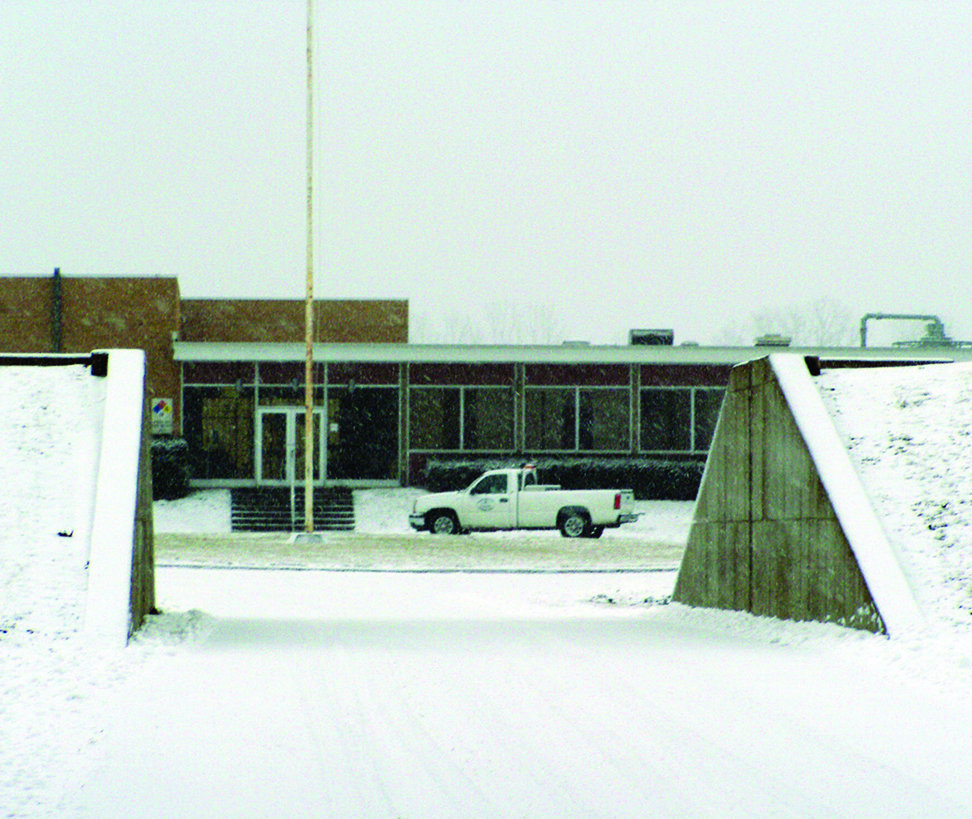Study Summary
Study Area – Black Hawk, Carroll, Clayton, Des Moines, Hancock, Johnson, Lee, Polk, and Winnebago Counties in Iowa
Hazard Type – Riverine Flooding
Project Type – Nine minor localized flood reduction projects
Total Project Cost – $2,590,042 (nine projects; 2010 dollars)
Total Losses Avoided – $52,863,381 (2010 dollars)
Return on Investment (ROI) – 18.29
Pre- and Post-Mitigation Events
Iowa has long been vulnerable to severe storms and flooding. Every year, flooding causes residents, businesses, and taxpayers millions of dollars in repairs. From 1953 to 2008, there were 32 Presidentially Declared Disasters for flooding events in Iowa. The Great Flood of 1993 impacted nine Midwestern states, caused $15 billion in damage, and had devastating effects in Iowa. This flood prompted Iowa to complete a large number of flood mitigation projects. Three of the projects in this study were funded as a direct result of the damage caused by this flood.
The two most recent, significant floods in Iowa occurred in 2001 and 2008. In the spring of 2001, rapid snowmelt and heavy storms caused flooding, and 13 counties were designated as disaster areas. The 2008 flood, which affected much of the Midwest, resulted from a winter in which precipitation was far above normal, followed by extreme rain events in June 2008. According to the National Climatic Data Center (NCDC), precipitation across the Upper Mississippi Basin from December 2007 through May 2008 was the second-highest total since recordkeeping began in 1895, and over 1,100 daily precipitation records were broken across the Midwest during the month of June (NCDC, 2008).
The resulting floods affected most of Iowa; the President designated 85 of Iowa’s 99 counties as disaster areas.
Loss Avoidance Methodology
Because Iowa is highly susceptible to flooding, the State of Iowa initiated a number of flood mitigation projects from 1993 to 2008 to reduce the risk of property damage, the threat to life and public health and safety, and the cost of emergency response. Nine flood reduction projects were considered for this study. The projects are located in the communities of Burlington, Cedar Falls, Des Moines, Coralville, Elkader, Forest City, Manning, McGregor, and Montrose.
FEMA initiated the Iowa study in 2009 with the cooperation of Iowa Homeland Security & Emergency Management. Eleven projects were initially selected, but two were eliminated because they had not yet resulted in any losses avoided. Figure 1 illustrates the project locations.

Source: FEMA, May 2010
The following nine flood mitigation projects were included in the final study:
- Burlington Municipal Water Works Project –Installation of retaining walls and stop logs to fill gaps in earthen levees.
- Cedar Falls Utilities Flood Protection Project –Construction of floodwalls to protect utilities.
- Coralville Flood Control Project – Installation and incorporation of three pump stations and water detention pond in a storm sewer system.
- Des Moines, Central Campus Floodgates Project –Installation of floodgates to close a railroad opening in a levee system to protect the Riverfront.
- Elkader Flood Protection Project – Increase in height of the existing berm surround Sewage Treatment Plant aeration lagoons and construction of a floodwall to protect the Main Sanitary Lift Station.
- Forest City Flood Protection Project – Construction of a ring levee on three sides of the Water Treatment Plant to protect facility to the 500-year water surface elevation (WSE) plus 1 foot of freeboard.
- Manning Well Head Project – Elevation of two municipal well heads in the City to the 500-year WSE.
- McGregor Floodwall Project – Construction of a floodwall with stop log floodgates and a berm to protect the utility to the 500-year WSE.
- Montrose Floodproofing Project – Demolition of the old control building and construction of a new control building on fill to protect the building to above the 500-year WSE. The project also involved raising the wet wall for protection to above the 500-year WSE.
Many of the projects considered in the Iowa study involve facilities such as water treatment plants, wastewater treatment plants, and electrical plants with specialized contents and equipment. Figure 2 shows the earthen levee constructed to protect the Burlington Municipal Water Works facility from future flood events. The opening would be protected by sandbags during a flood.

Source: FEMA, 2010
Loss Avoidance Methodology
To estimate losses for these projects, four main loss categories were analyzed. These include physical damage losses, loss of function, emergency protective measures, and nontraditional benefits. These four loss categories included several other specialized loss types that are assigned dollar values to help in the loss estimation analysis.
The Iowa studies are unique as they not only had a Flood Boundary Analysis showing the flooding elevations, which are normally used in the analysis of flood reduction projects, but also a Flood Inundation Analysis, which was used to determine whether a flood event would have breached the flood barrier and inundated the protected buildings and infrastructure. These studies also included emergency response costs and quantification of mental stress and anxiety in terms of opportunity costs that provided an accurate assessment of losses avoided for these projects.
Return on Investment
The total value of the losses avoided for all projects is $52,863,381, and the total project investment is $2,590,042. An ROI of over 100% indicates that the project costs have been recovered based on losses avoided after the project was completed. For a BCA, FEMA estimates that minor local flood reduction projects have a useful life of 50 years. The projects in this study have already surpassed their Return on Investment in less than 15 years into their useful lives. Thus, it is anticipated that as additional flood events occur, the total losses avoided and consequently the ROI will increase.
Resources
NCDC (National Climatic Data Center). 2008. Climate of 2008, Midwestern U.S. Overview. Available at http://www.ncdc.noaa.gov/oa/climate/research/2008/flood08.html. Accessed on April 8, 2010.
FEMA (Federal Emergency Management Agency). 2010. Loss Avoidance Study: Iowa, Flood Reduction Projects.


